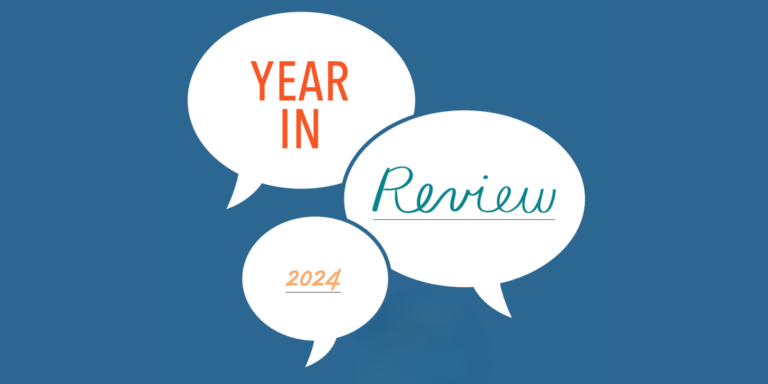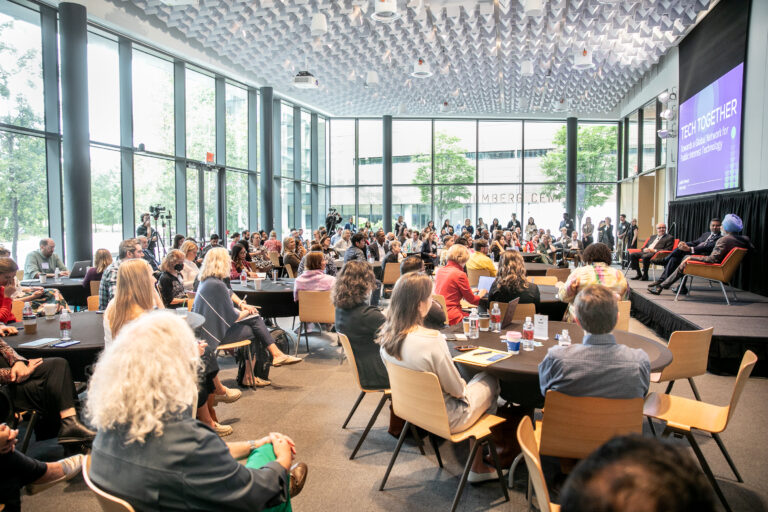AI tools can be used to generate content, but only humans can generate context
Where do you go to find information about your local community? Most likely, you first turn to your computer or mobile phone to search the Web for “movies near me”, “closing time for the east side farmers’ market”, or “building code for historic main street.” These information queries are usually handled well by modern websites and apps that can search and present this kind of information–often using AI to generate a natural language answer with a link to another website.
On the other hand, where would you go to find trusted knowledge about your local community? Searching for “Why is the mall closed on Mondays?”, “What is a fair tip at my local diner?” or “Why is no one enforcing the speed limit on main street?” will likely take you one of two places. Either you get lucky and find that a local news outlet ran a story a couple years ago addressing your question; or, more likely, you are directed to a discussion forum where someone else asked a similar question, with others attempting to answer. This approach is much less likely to yield the answers you are looking for.
Rewind to the last century. Before the ubiquity of digital information, if you were looking for local information or local knowledge, you might first pick up a newspaper that published local movie times or a calendar of community events. You might have visited the local library or town hall to find building codes. And while you’re there, you might also discover the context surrounding the information from local reporters, librarians, town officials, or other community members. You might find programs or courses that would allow you to dive deeper into a topic. You would learn more about the “why” and “how” questions that provide greater understanding. The institutions that were our sources of information were often our source of context and knowledge as well.
Civic Knowledge Infrastructure
At Siegel, we call these kinds of local institutions “Civic Knowledge Infrastructure” because they help provide both information and the context and knowledge that local communities, local businesses, and local governments need to thrive. In some localities, these institutions include local news outlets, libraries, museums, and community colleges. In other communities, the post office, faith-based institutions, historical societies, barber shops, tech incubators, or farmers’ markets might serve as civic knowledge infrastructure. Each community may have a different mix, yet they all serve similar functions.
These institutions are essential to our civic knowledge infrastructure because they help turn local information into local knowledge by providing history, context, and meaning to the raw information. They are essential to our democracy and our economy. These institutions are also proactive – they don’t wait for a query from a community, but actively synthesize information, provide information sessions, host outreach events, or advertise their services. This stands in stark contrast to a blinking cursor waiting for an already well-formed question.
In addition to providing information and knowledge, these institutions also help create the social fabric of our communities. They are integral to our social infrastructure–fostering interpersonal connections and networks–and help provide the scaffolding that ties physical, social, and digital dimensions of infrastructure together. Further, in an age full of systems designed for scale and demanding the rapid processing of data, local institutions can help preserve meaningful context for their communities. This is context that may be lost when towns or community groups rely on national or globally-scaled digital infrastructure.
Impact of Digital Information
While the digital age has brought a proliferation of access to information, we have also seen an erosion of many of the institutions that provided trusted context and knowledge.
Increased reliance on digital services, coupled with the decline in advertising revenue, has caused the local news industry to struggle in finding sustainable revenue streams to support their operations and maintain quality journalism. In 2023, local newspapers were closing at the rate of 2.5 per week, according to a study by the Medill School at Northwestern. For those that continue to survive, their reporting staffs are being dramatically reduced, leading to an overall decrease in employment in the broader sector (see Chart 1.)
Chart 1.
Source: Siegel Endowment’s analysis of BLS survey data, HT Owen Davis. Shaded regions delineate NBER-determined recessions.
Libraries and museums have faced significant challenges as well, especially because of declines in visits due to the COVID-19 pandemic and its aftermath. Visits to museums have not yet returned to pre-pandemic levels, while visits to libraries per person peaked in 2009 and also saw a decline during the pandemic. Nevertheless, these institutions still serve millions. About one in four US adults visited a museum in 2023, and pre-pandemic, nearly half of Americans had visited a library in the prior 12 months, contributing to over 1 billion total visits annually.
In this digital age, these institutions are facing similar, though distinct, challenges about how to stay relevant and financially viable. Local newspapers are grappling with the loss of ad revenue. Libraries are adjusting to the rise of e-books. Museums continue to compete for attention with digital entertainment options.
Public sector funding of these institutions is also essential. This is especially true for those that have historically relied on a mix of local, state, and federal support, such as our nation’s library system. Inadequate public funding can lead to severe consequences.
To be sure, not all the challenges are digital in nature, but for many the speed and scale at which technology changes leaves these institutions playing catch-up. The digital transition left organizations at the mercy of search platforms, where a tweak to an algorithm can sway the fortunes of organizations that rely on traffic from those sites. Organizations are grappling with how to stay viable. Some are turning to philanthropy to help “fill the gap” between dwindling revenue (from subscriptions, advertising revenue, daily visits, etc.) and rising costs. Some are rethinking what services they are providing and how to stay financially viable over the long-term. Others are thinking about joining together in partnerships to offer new services and reach new members of the community.
Impact of Generative AI
It is tempting to think that generative AI might be a substitute for or a successor to the institutions that grew up in the 20th century (or before). A “good” Large Language Model – one that is safe, trusted, and transparent – deployed by a sophisticated and well-meaning organization, might hold the promise of synthesizing existing information to derive local-level insights. However, even if these conditions were met and made accessible to towns and communities across America, the technology would only be made possible because the LLM would have been trained on a mountain of data that was largely created by civic knowledge institutions. If AI tools displaced those institutions, there would be no infrastructure to create and curate new information and the AI system would become static and out-of-date – violating the old farmer’s advice “Don’t eat your seed corn!”
Even if AI could ingest new information, there is so much context and texture in a community – dynamic social relationships, unspoken histories, reputations – that can’t be captured in a dataset. For this reason, some civic knowledge institutions may be uniquely positioned to design and implement AI tools tailored to communities. They can develop systems that not only enhance services, but also calibrate for desired outcomes, mitigate unwanted biases, and monitor mis- and disinformation. Achieving this, however, requires bridging the significant gaps in technical capacity for designing and deploying such technology in local communities, while also reimagining how AI and tech companies can collaborate to benefit both civic institutions and the communities they serve.
Role of Philanthropy
Philanthropy is well known for supporting a variety of cultural institutions at local levels. Andrew Carnegie famously helped fuel the growth of libraries in the United States. In the late 19th and early 20th century his donations paid for 1,679 new library buildings. More recently, the MacArthur Foundation lead an effort to establish “Press Forward”, a $500 million fund to support local news. The Knight Foundation is one of the most active philanthropies the space and has granted hundreds of millions of dollars to support news.
While some funders, like the examples above, support local institutions across the country, others have taken or included a targeted approach: focusing on a single city or region. Examples include the Kresge Foundation’s work focusing on Detroit, Siegel’s own work in Atlanta, and the myriad community foundations that focus on issues in a particular region (and which are also often part of civic knowledge infrastructures where they work.)
At Siegel, we will be exploring civic knowledge within our existing infrastructure issue area, consistent with our perspective that we should take an expansive view of infrastructure that includes social, digital, and physical dimensions. We will do this by working to bring together different facets across civic knowledge institutions to identify common problems and shared solutions. As these institutions continue to adapt to emerging technologies—just as they have done in the past—we aim to provide new frameworks and resources that help reimagine a future where they can leverage technology to advance their work and missions, just as effectively as any for-profit company.
Rebuilding Civic Knowledge Infrastructure Together
Communities, governments, and philanthropy all have roles to play in helping to restore and reimagine how our civic knowledge institutions can serve our communities. For some communities, it may mean simply providing more resources for, say, the local library system. For others it may mean generating collaborations, such as between local educational institutions and news organizations. If civic knowledge infrastructure is an important foundation for our communities, then it should be a community responsibility to support these institutions.
How should civic knowledge infrastructure adapt to a changing information ecosystem?
- Sustainability models. What’s the best way to support the longevity of our civic knowledge institutions? What tools can we use to address the changing demand for context? What adaptation to existing institutions or new institutions are needed to help them address the public’s changing expectations/ways of receiving information?
- Collaboration and remixing. What institutions can collaborate to create greater community engagement? What is the right mix of in-person and digital tools? How can institutions assess the right mix of activities to address their goals? How might we identify and fill gaps?
- Development. How is generative AI being used to bolster civic knowledge and healthy information ecosystems? How should it be used? How do we go from practice to best practice? How does local knowledge maintain its integrity when integrated into large systems?? Who has access to these models, whose knowledge is integrated, and what paths exist for these sources of local data to remain sustainable?
- History. In what ways is the gen AI revolution similar/different from the internet revolution? What can we learn from that past to avoid the harms of the past?
This article was written by John Irons, Senior Vice President and Head of Research at Siegel Family Endowment.
Authors’s Note: This article greatly benefitted from a variety of conversations with those who are currently working to provide local knowledge and context through various channels. It also benefited from comments and suggestions from numerous colleagues at Siegel. Errors are, of course, my own.





